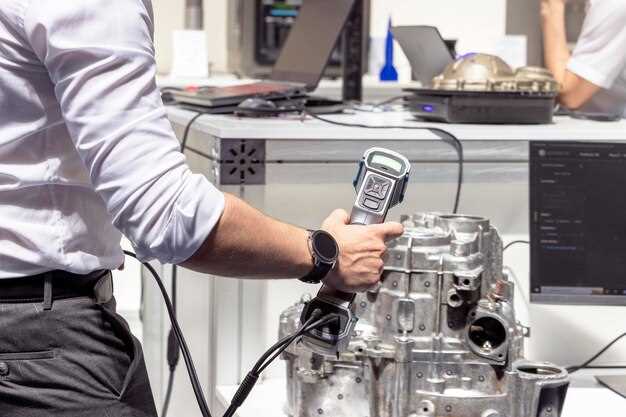Audi Engine Misfire – Diagnosis and Fix

Experiencing a misfire in your Audi engine can be a frustrating and concerning issue. Understanding the causes of engine misfires is crucial for any vehicle owner, as it not only affects performance but can also lead to more serious mechanical problems if left unaddressed. This guide aims to provide you with a comprehensive overview of the troubleshooting steps and repair solutions to effectively manage engine misfire problems.
Misfires can stem from various sources, such as faulty spark plugs, malfunctioning fuel injectors, or issues with the ignition coil system. Recognizing the symptoms early can save both time and money by preventing further damage. In this repair guide, we will explore the most common causes of engine misfires while offering detailed instructions on how to diagnose them using simple tools and techniques.
By following the steps outlined in this guide, Audi owners can take control of their vehicle’s performance and ensure a smoother driving experience. Whether you’re a seasoned mechanic or a car enthusiast looking to gain insights into engine maintenance, this misfire troubleshooting and repair guide will equip you with the knowledge needed to tackle any engine misfire issue with confidence.
Identifying Symptoms of Engine Misfire in Audi Vehicles

Engine misfire in Audi vehicles can manifest through various symptoms that may indicate underlying issues. Recognizing these signs early can help prevent severe damage and ensure optimal performance. One of the most common indicators is an uneven or rough idle, where the engine fails to run smoothly when at rest.
Another prominent symptom is a significant decrease in acceleration. If the vehicle struggles to pick up speed or responds sluggishly when the accelerator is pressed, it may suggest a misfire condition. Additionally, the presence of warning lights on the dashboard, particularly the check engine light, should not be overlooked. This light typically signals issues within the engine system, including misfires.
Drivers may also experience abnormal engine sounds, such as popping or backfiring, which can indicate incomplete combustion. Fuel efficiency can decline noticeably, resulting in increased consumption and reduced mileage per gallon. Other signs include engine vibrations or shaking, particularly felt in the cabin while driving.
Monitoring these symptoms closely can provide invaluable insights into potential misfire issues. A comprehensive guide to addressing these symptoms can lead to effective troubleshooting and repair, ensuring the longevity and reliability of Audi vehicles.
Common Causes of Engine Misfire in Audi Models
Engine misfire is a prevalent issue in Audi vehicles, which can lead to performance degradation and increased emissions. Understanding the common causes can significantly aid in the repair process. Here are several frequent reasons for engine misfires in Audi models:
1. Faulty Spark Plugs: Spark plugs ignite the air-fuel mixture in the combustion chamber. Worn or damaged spark plugs can lead to incomplete combustion, resulting in misfires. Regular inspection and replacement of spark plugs are essential to maintain engine performance.
2. Ignition Coil Failure: The ignition coil provides the necessary voltage to the spark plugs. A malfunctioning coil can fail to deliver adequate spark, causing the engine to misfire. Audi models often have ignition coils that are susceptible to wear over time, necessitating timely repair.
3. Fuel System Issues: Problems within the fuel delivery system, such as clogged fuel filters or failing fuel injectors, can disrupt the proper fuel flow to the engine. Insufficient fuel can lead to lean conditions and misfires. Regular maintenance of the fuel system helps prevent these issues.
4. Vacuum Leaks: Leaks in the intake manifold or associated hoses can create an imbalance in the air-fuel mixture. This results in a lean condition, causing misfires. Inspecting and sealing vacuum leaks can often resolve this problem.
5. Engine Timing Problems: Incorrect timing can also lead to engine misfire. If the timing belt or chain is worn or has slipped, it can cause misalignment between the crankshaft and camshaft, leading to misfires. Ensuring the timing components are in good condition is crucial for engine health.
6. Malfunctioning Sensors: Various sensors, such as the Mass Airflow Sensor (MAF) or the Oxygen Sensor, play vital roles in engine management. A faulty sensor can send incorrect data to the engine control unit (ECU), leading to improper air-fuel mixtures and misfires. Regularly checking sensor functionality can prevent such issues.
Identifying these common causes is the first step in addressing engine misfires in Audi models. By following this guide and performing routine diagnostics, owners can ensure their vehicles remain in optimal condition, mitigating the risk of misfires and enhancing overall engine performance.
Step-by-Step Diagnosis of Engine Misfire Issues
Diagnosing engine misfire issues in Audi vehicles requires a systematic approach. This guide will help you identify the root cause, ensuring efficient troubleshooting and repair.
- Visual Inspection:
- Check for any obvious signs of damage or wear on the engine components.
- Inspect wires, connectors, and plugs for corrosion or disconnection.
- Look for vacuum leaks around hoses and intake manifold.
- Run Diagnostic Scans:
- Use an OBD-II scanner to retrieve error codes from the engine control unit (ECU).
- Identify codes related to misfires (e.g., P0300-P0308).
- Make note of any pending codes that may not have triggered a check engine light.
- Check Ignition System:
- Inspect spark plugs for wear, carbon buildup, or damage.
- Test ignition coils for proper resistance and functionality.
- Verify the quality of spark plug wires and their connections.
- Evaluate Fuel Delivery:
- Check fuel pressure using a gauge; compare it with manufacturer specifications.
- Inspect fuel injectors for clogs or leaks.
- Examine the fuel filter to ensure it’s not obstructed.
- Analyze Air Intake and Engine Compression:
- Inspect the air filter for blockages that could restrict airflow.
- Check the mass air flow (MAF) sensor and replace if necessary.
- Conduct a compression test to ensure all cylinders are within the proper range.
- Review Engine Timing and Sensors:
- Check the timing belt or chain to ensure it’s aligned correctly.
- Inspect camshaft and crankshaft position sensors for proper operation.
- Reset the ECU to eliminate any temporary glitches.
- Test Drive:
- Take the vehicle for a test drive to confirm whether the misfire persists.
- Pay attention to changes in power and engine performance.
- Monitor any activated warning lights during the drive.
By following this step-by-step guide, you can effectively diagnose engine misfire issues in your Audi. Addressing the identified problems promptly will lead to optimal engine performance and reliability.
Tools Required for Engine Misfire Repair in Audi

When diagnosing and repairing an engine misfire in an Audi, having the right tools is essential to ensure an effective and efficient process. Below is a comprehensive guide to the necessary tools that will assist in identifying and resolving misfire issues.
1. OBD-II Scanner: A high-quality OBD-II scanner is crucial for retrieving diagnostic trouble codes (DTCs) from the engine control unit (ECU). This tool helps pinpoint the misfire’s root cause by providing error codes related to various engine components.
2. Multimeter: A digital multimeter is necessary for testing electrical components such as ignition coils, spark plugs, and sensors. It allows for accurate readings of voltage, resistance, and continuity, which are vital in diagnosing electrical issues associated with misfires.
3. Spark Plug Socket: To inspect and replace spark plugs, a spark plug socket is required. This specialized tool enables easy removal of the spark plugs, allowing for checks on their condition and functionality.
4. Compression Tester: A compression tester is important for checking the engine’s compression levels. Low compression can lead to misfires, so this tool helps determine if the engine’s internal components, like rings or valves, are functioning properly.
5. Fuel Pressure Gauge: Misfires can also be caused by fuel delivery issues. A fuel pressure gauge will help assess if the fuel system is delivering the appropriate pressure to the injectors, ensuring reliable operation.
6. Vacuum Gauge: A vacuum gauge can be used to check for leaks in the intake system, which can also result in engine misfires. This tool assists in diagnosing issues related to the air-fuel mixture.
7. Pliers and Wrenches: Basic hand tools such as pliers and wrenches are necessary for various repairs and adjustments throughout the troubleshooting process. These tools enable the secure handling of bolts and clamps within the engine compartment.
8. Torque Wrench: If you need to reassemble components, a torque wrench ensures that all bolts are tightened to the manufacturer’s specifications, preventing future issues and ensuring the engine’s longevity.
By equipping yourself with these essential tools, you can effectively troubleshoot and repair engine misfire issues in your Audi. Each tool plays a critical role in allowing for efficient diagnostics and ensuring that your engine runs smoothly.
Repair Procedures for Ignition System Failures
The ignition system is crucial for the proper functioning of an engine, and any failures can lead to misfires, affecting performance and efficiency. To address ignition system failures effectively, follow these repair procedures:
1. Diagnostic Scan: Begin by connecting an OBD-II scanner to the vehicle’s diagnostic port. This will help identify any stored trouble codes related to ignition system malfunctions. Pay close attention to codes indicating misfire in specific cylinders.
2. Visual Inspection: After diagnosing the codes, perform a thorough visual inspection of the ignition components. Check for wear or damage on spark plugs, ignition coils, wiring, and connectors. Look for signs of corrosion or loose connections that could cause misfires.
3. Spark Plug Replacement: If the inspection reveals worn or fouled spark plugs, replace them with the manufacturer’s recommended type. Ensure proper gap settings for optimal performance. Installing new spark plugs can often resolve misfire issues.
4. Ignition Coil Testing: Test the ignition coils using a multimeter to check their resistance and functionality. Replace any defective coils, as faulty coils can lead to inconsistent spark generation, resulting in misfires.
5. Wiring and Connector Repair: If issues are found in the wiring or connectors, repair or replace damaged components. Ensure all connections are secure and free of corrosion to guarantee proper electrical flow.
6. Fuel System Check: Sometimes, misfires may be related to fuel delivery issues. Inspect the fuel injectors and fuel pump for proper operation. Clean or replace injectors as necessary to ensure efficient fuel atomization.
7. Engine Control Module (ECM) Reprogramming: If any changes to the ignition system components are made, consider reprogramming the ECM to adapt to the new parts. This can enhance performance and help eliminate any lingering misfire issues.
8. Test Drive: After completing the repairs, conduct a test drive to monitor engine performance. Pay attention to any signs of misfire or rough idling. If the issue persists, further investigation may be required.
By following these steps, you can effectively repair ignition system failures and eliminate misfire problems in Audi engines, ensuring a smoother and more efficient operation.
Testing and Replacing Fuel Injection Components
When dealing with engine misfires in Audi vehicles, one of the pivotal areas to examine is the fuel injection system. The fuel injectors play a crucial role in delivering the right amount of fuel into the engine’s combustion chambers at the correct time. A malfunction in this system can lead to poor performance, increased emissions, and, most critically, engine misfires.
Testing fuel injection components is essential to diagnose the specific cause of the misfire. Here’s a step-by-step guide to help you assess the condition of the injectors and related components:
| Step | Action | Tools Needed |
|---|---|---|
| 1 | Perform a Visual Inspection | Flashlight, Safety Glasses |
| 2 | Check Fuel Pressure | Fuel Pressure Gauge |
| 3 | Test Injector Resistance | Digital Multimeter |
| 4 | Inspect Wiring and Connectors | Wiring Diagram, Electrical Tester |
| 5 | Perform an Injector Balance Test | Cold Start Kit or Scan Tool |
Once you have identified faulty injectors or components, replacing them becomes necessary to eliminate the misfire symptoms. Follow these steps for replacement:
| Step | Action | Tools Needed |
|---|---|---|
| 1 | Disconnect Battery | Socket Wrench Set |
| 2 | Remove Engine Cover | Ratchet and Socket |
| 3 | Extract Faulty Injectors | Injector Puller (if necessary) |
| 4 | Install New Injectors | Lubricant for O-Rings |
| 5 | Reconnect Everything and Perform a Test | Diagnostic Scan Tool |
After the replacement of defective components, it’s crucial to run the engine to check for any remaining misfire issues. Monitoring the engine performance and conducting additional tests can ensure that the fuel injection system is functioning correctly, thus restoring optimal performance.




